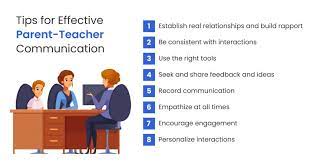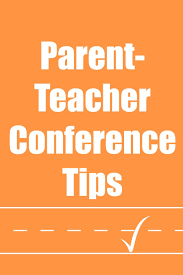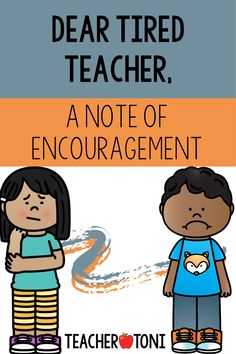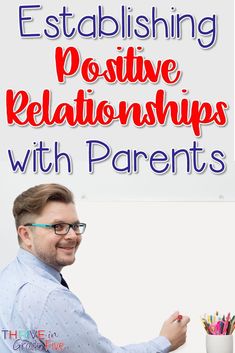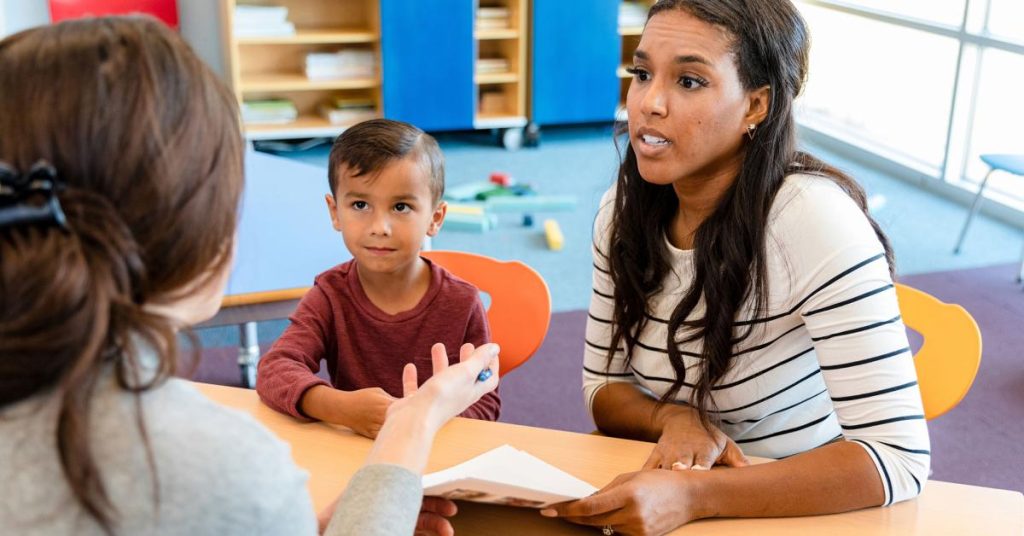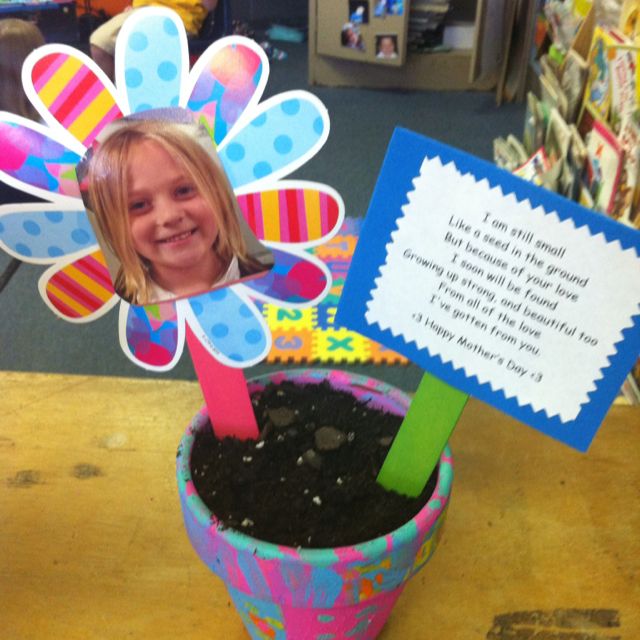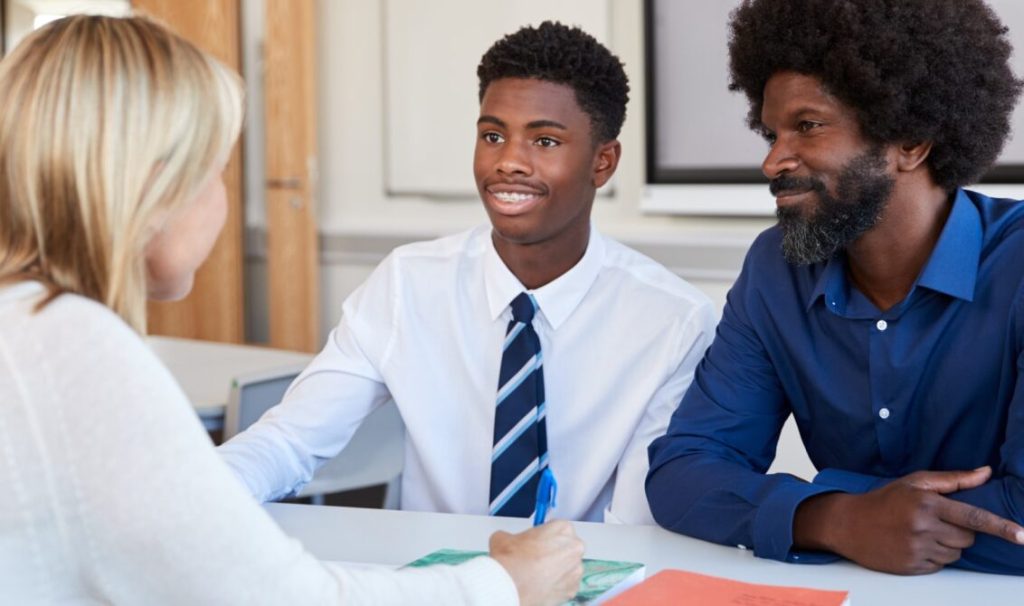As educators and parents navigate the complex landscape of a child’s education, effective parent-teacher communication stands as a critical factor in supporting student success. Below are strategies and tips to foster a constructive and ongoing partnership between parents and teachers.
1. Open Communication Channels: Establish clear and open channels for communication. This could include regular newsletters, emails, phone calls, or use of school-provided digital platforms where progress and concerns can be shared routinely.
2. Scheduled Conferences: Hold regular parent-teacher conferences to discuss students’ achievements and areas of improvement. These face-to-face meetings can build trust and allow for detailed conversations about the student’s educational journey.
3. Utilize Technology: Take advantage of technology to enhance communication. Apps and online portals where teachers can post updates and parents can view their child’s progress make information accessible and encourage parent engagement.
4. Create a Positive Dialogue: Approach each interaction with positivity, focusing on strengths as well as areas for growth. Recognising achievements encourages students and avoids making communication seem solely like a channel for addressing problems.
5. Cultural Sensitivity and Inclusivity: Be sensitive to cultural differences in communication styles and preferences. Offer translators or written materials in home languages when needed to ensure that all families can engage effectively.
6. Parent Involvement: Invite parents to participate in classroom events or volunteer opportunities. When parents are involved in school activities, they gain insights into the educational environment which supports better conversations about it.
7. Educational Workshops for Parents: Organize workshops that help parents understand curriculum content, teaching methods, or assessment criteria. Educated parents can better assist their children and have more meaningful discussions with teachers.
8. Set Communication Expectations Early: At the start of each academic year, outline how often you’ll communicate with parents, the best times for them to reach you, and what issues require immediate contact versus what can wait for scheduled meetings.
9. Be Proactive with Concerns: Don’t wait for small concerns to become larger issues before communicating with parents. Bringing concerns up early allows for collaboration on solutions before problems escalate.
10. Listening Skills: Encourage active listening during conversations with parents; acknowledge their concerns or suggestions, which shows respect for their role in their child’s education.
11. Feedback Channels for Parents: Provide opportunities for parents to give feedback on various aspects of their child’s school experience including communication with teachers—this feedback can be used to improve strategies over time.
12. Confidentiality: Ensure that all communications maintain confidentiality regarding student information unless sharing is agreed upon by all involved parties for the purpose of assisting the student.
Implementing these strategies will facilitate a more dynamic partnership between educators and families, setting the stage for effective collaboration geared toward the best interests of the students’ learning experiences. By prioritizing clear, open, and positive interactions tailored to meet diverse needs, both parents and educators can work together towards fostering an environment conducive to educational excellence.
Parent Teacher Conference Tips
Parent-teacher conferences are a crucial platform for building a partnership between educators and parents, aiming to support the educational progress and well-being of students. To have a productive and positive conference, it is essential to follow a few strategic tips.
Prepare in Advance
Parents should come prepared with questions or topics they want to discuss. Going over your child’s work, report cards, and past teacher feedback can be helpful. Creating a list of talking points ensures that all concerns are addressed during the limited time available.
Be Punctual and Respect Time Limits
Arriving on time shows respect for the teacher’s schedule and maximizes the allotted time for discussion. Being mindful of the time also ensures that subsequent meetings for other parents are not delayed.
Listen Actively
During the conference, it is important to listen to the teacher’s observations and feedback attentively. Active listening can help clarify concerns and provide a better understanding of your child’s academic experience.
Keep an Open Mind
Sometimes, teachers may share information that surprises or concerns parents. It’s vital to remain calm and open-minded, considering the teacher’s perspective before responding.
Discuss Specifics
Ask for specific examples if teachers mention behavioral patterns or academic issues. Understanding the context can help in creating effective strategies for improvement.
Share Insights About Your Child
Parents have insights into their child’s learning style, challenges, personality traits, and interests that can be useful for teachers. Sharing this information can help teachers tailor their approach to better suit the student’s needs.
Set Goals Together
Collaboratively set achievable goals for the student’s academic progress and develop a plan of action. This might include regular check-ins or additional resources if needed.
Follow Up
After the meeting, take steps outlined in the conference—whether it involves helping with homework, seeking outside resources, or maintaining ongoing communication with the teacher.
By following these tips, parent-teacher conferences can become an effective tool in supporting children’s success at school.
What To Do If You Are Too Tired To Teach
Teaching is an incredibly rewarding profession, but it can also be exhausting. There will invariably be days when you feel too tired to teach. Here are some strategies that educators can use to manage those days:
1.Prioritize and Simplify: Look at your lesson plan and identify the most critical learning objectives for that day. See if there’s anything that can be pushed back or simplified without compromising the core goals.
2.Use Student-Centered Learning Techniques: Shift the focus from teacher-led instruction to student-led learning. Encourage group work, projects, or peer teaching to keep students engaged while allowing you some respite.
3.Integrate Multimedia and Technology: If you’ve got videos, podcasts, or interactive software that are relevant to your lesson plan, use them. They can give you a necessary break and provide variety in information delivery which often rejuvenates student interest.
4.Take Short Breaks: If possible, give yourself brief moments of downtime during class by giving students independent work or reading time. Use this time to step outside, breathe deeply, or simply rest your eyes.
5.Stay Hydrated and Energized: Keep water and healthy snacks like nuts or fruit on hand to help boost your energy levels throughout the day.
6.Lean on Your Colleagues: Sometimes swapping sessions with a colleague or asking for assistance can provide a much-needed reprieve.
7.Reflect on Your Boundaries: If you’re constantly tired, consider whether you’re taking on too much without sufficient breaks or self-care time.
8.Consult with Administration: If fatigue is a persistent problem that affects your teaching ability, it may be necessary to have a conversation with school administrators about potential solutions.
9.Seek Professional Help: Chronic exhaustion might be a symptom of an underlying health issue; don’t hesitate to consult a healthcare professional.
Remember, everyone has limits and acknowledging when you need to take it easy is not only important for your health but also for the quality of education you provide. Your well-being is essential to ensuring that your students receive the best possible learning experience.
6 Tips for Establishing a Positive Parent Teacher Relationship
A positive parent-teacher relationship is crucial for the progress and well-being of students. It fosters an environment that allows children to achieve their full potential both academically and socially. Here are six tips for parents looking to establish a beneficial relationship with their child’s teacher:
1.Communicate Openly and Respectfully: Effective communication is the cornerstone of any good relationship. Parents should approach teachers with respect and the understanding that both parties share a common goal: the child’s success. This means listening attentively, being open to feedback, and responding thoughtfully.
2.Be Proactive: Don’t wait for a problem to arise before making contact. Introduce yourself at the start of the year and express your willingness to support your child’s learning experience. An early introduction can set a positive tone for future interactions.
3.Participate in School Activities: Engaging in school events, volunteering in activities, or joining the PTA are excellent ways to show your interest in your child’s education and build rapport with teachers and staff.
4.Understand the Teacher’s Approach: Teachers have their methods and policies for managing their classrooms, so take time to understand these guidelines. This knowledge will help you reinforce similar values and expectations at home, creating consistency for your child.
5.Provide Support at Home: Help create an atmosphere that values education by supporting homework regimes, reading together, or discussing what they learned at school. Regularly check in with your child about what’s happening at school and any assistance they may need.
6.Approach Challenges as a Team: If issues arise, remember that you’re on the same team as the teacher— working towards your child’s best interest. Approach challenges with a problem-solving mindset rather than assigning blame.
By implementing these tips, parents can foster a robust collaborative partnership with teachers, contributing significantly to their child’s educational journey.
Parent Teacher Communication Teaching Resources
The success of students in the educational system isn’t solely dependent on classroom instruction or the resources provided to them; it is heavily influenced by the communication that takes place between parents and teachers. Effective parent-teacher communication is a cornerstone of facilitating better learning experiences and outcomes for students.
Communication between parents and teachers allows for a two-way exchange of information. Teachers provide insights into the child’s performance, behavior, and areas for improvement, while parents can offer personal observations and contribute to a deeper understanding of the child’s needs, preferences, and potential issues at home that may be affecting their academic life. This open dialogue ensures that both parties are working towards the same goal: the child’s educational success.
Teaching resources that encourage regular and constructive communication can significantly enhance this partnership. These resources may include progress reports, newsletters, digital communication platforms (such as classroom blogs or school apps), parent-teacher conference schedules, questionnaires for parent feedback, and guidelines for effective communication practices.
Digital tools have revolutionized the way in which parents and teachers interact by providing immediate, real-time updates on a student’s progress through platforms that are easily accessible from anywhere. This ensures that parents stay informed about their child’s academic status, upcoming assignments, attendance records, and school events.
Moreover, teachers who utilize these teaching resources report greater parental engagement in homework routines, school activities, and overall support in their children’s education. This collaborative approach helps build trust between parents and teachers – trust that is imperative if any concerns or issues arise.
Parent-teacher communication teaching resources also often include strategies to help educators reach out efficiently to non-English-speaking families or to those who might not have consistent access to technology. These strategies ensure inclusivity so that all students receive equal support from their home environments regardless of background or socioeconomic status.
Recognizing the importance of this collaboration has led many schools to invest time in training their staff on how to effectively use these resources so they can proactively involve parents in their children’s education. Parents too can benefit from guidance on how best to communicate with educators to foster an environment where questions are encouraged, feedback is constructive, and support is mutual.
In summary, parent-teacher communication teaching resources are invaluable tools for enhancing student learning. They create a strong foundation for sharing information effectively; provide avenues for increased parental involvement; promote inclusivity among diverse family backgrounds; and ultimately contribute to a more supportive and collaborative educational experience for students. Implementing these resources is therefore an essential aspect of modern-day teaching strategies aimed at ensuring academic success through strong community partnerships.
Inclusive Mother’s Day and Father’s Day Gifts From Kids: Teacher Ideas
Mother’s Day and Father’s Day are important occasions to celebrate parents and show appreciation for their love and care. However, it’s essential to foster inclusivity and acknowledge that not all children have traditional families. Teachers can play a crucial role in ensuring that every child feels included and supported during these celebrations. Here are some teacher ideas for inclusive Mother’s Day and Father’s Day gifts from kids:
1. All About Me Book: Instead of focusing on just moms or dads, encourage students to create an “All About Me” book. This activity allows children to share their unique stories, including their family structure and the important people in their lives. It’s an excellent way to celebrate the diversity within the classroom.
2. Family Tree Craft: Help children create a family tree craft that embraces different family structures. Provide a variety of materials, such as paper, markers, and stickers, and encourage kids to represent their families creatively. This activity will help students understand that families come in all shapes and sizes.
3. Gratitude Jar: Have students decorate small jars and encourage them to fill the jars with notes expressing gratitude for their loved ones. Whether it’s a parent, grandparent, aunt, uncle, or teacher, this activity allows children to appreciate the people who play a significant role in their lives.
4. Homemade Coupon Book: Help children create personalized coupon books for their caregivers. These coupons can offer acts of kindness, such as helping with chores, cooking a meal, or spending quality time together. This activity emphasizes the importance of showing love and appreciation to all caregivers, regardless of their gender.
5. Photo Frame Craft: Provide kids with materials to create personalized photo frames. Encourage them to include pictures of their loved ones, whether it’s their mom, dad, grandparent, or any other significant person in their life. This activity allows children to celebrate the special relationships they have, irrespective of traditional family roles.
6. Identity Collage: Allow children to create identity collages using magazines, photographs, and drawings. This activity promotes self-expression and understanding of individual identities. Celebrate the diverse identities within your classroom and encourage students to respect and appreciate differences.
7. Storytelling Session: Organize a storytelling session where children can share stories about their loved ones. This activity allows students to learn about different family dynamics and promotes empathy and understanding among peers. Emphasize that love and care exist in all kinds of families.
Remember, it’s essential to create a safe and supportive environment where every child feels valued and included. By embracing diverse family structures and celebrating individual identities, teachers can help their students develop empathy, respect, and appreciation for one another. These teacher ideas for inclusive Mother’s Day and Father’s Day gifts from kids are a step towards fostering inclusivity in the classroom and beyond.
Teacher Maternity Leave a Planning Guide for Your Whole Pregnancy
Pregnancy is a time filled with anticipation, excitement, and lots of planning—especially for teachers about to embark on maternity leave. The process can seem daunting, but with a comprehensive guide, expecting educators can navigate the months ahead with confidence. Here’s how to ensure you have a worry-free maternity leave:
Early Pregnancy (Months 1-3)
1. _Familiarize Yourself With Your Rights:_ Start by reviewing your school district’s maternity leave policy and state laws regarding maternity and family leave. Understanding the legal frameworks will help you make informed decisions.
2. _Schedule a Meeting with Administration:_ Communicate your pregnancy news to your school’s administration as early as you feel comfortable. Early notification helps both parties plan for the transition.
3. _Start Thinking About Your Leave Plan:_ Consider when you would like your leave to begin and how much time you might be away from the classroom.
Second Trimester (Months 4-6)
1. _Officially Request Maternity Leave:_ Submit the necessary paperwork required by your school district to formally request your leave. Be sure to follow up and confirm that all paperwork has been processed correctly.
2. _Discuss Transition Plans:_ Work with your administration to discuss the plan for transitioning class responsibilities to a substitute teacher.
3. _Begin Preparing Your Substitute Teacher Packet:_ Create comprehensive lesson plans, class routines, student information, grading policies, and any other relevant resources that will assist your substitute in running your classroom effectively.
Third Trimester (Months 7-9)
1. _Finalize Your Substitute Plans:_ Finish all lesson plans and instructional materials that your substitute will need during your absence.
2. _Prepare Your Students:_ Start preparing your students for the transition by explaining that you will be taking some time away and introduce them to the substitute teacher if possible.
3. _Set Up Communication Channels:_ Determine how or if you will maintain communication with the school during your leave and establish boundaries that respect your time with your new baby.
Birth & Beyond
1. _Enjoy Your New Arrival:_ Take this time to recover from childbirth and bond with your baby without worrying about work responsibilities.
2. _Stay Informed (If You Choose):_ Check-in on class progress as agreed upon before leaving but remember this period is primarily for you and your newborn’s well-being.
3. _Plan Your Return:_ As you get closer to returning, reconnect with school administration about any changes occurred dyring yoour absence or updated instructions you need to provide before resuming teaching duties.
With mindful planning and collaboration with school administrators and colleagues, teachers can navigate their maternity leave efficiently, ensuring peace of mind during this very special journey into parenthood.
8 Brilliant Ways to Cook and Learn with Kids!
Cooking with children can be an enjoyable and educational activity that helps build essential life skills and fosters a love for nutritious food. Here are eight brilliant ways to combine cooking and learning into a fun culinary adventure for your little ones.
1. Theme-based Cooking Days:
Designate days where cooking revolves around specific themes, such as “Tropical Tuesday,” where you and your kids can prepare fruit salads or fish tacos while learning about tropical climates and cultures.
2. Math in Measuring:
Incorporate math lessons by having your children measure ingredients. This reinforces their understanding of fractions, addition, and following instructions.
3. Science Experiments in the Kitchen:
Turn baking into a science lesson by experimenting with ingredients such as baking soda and vinegar. Discuss the chemical reactions that occur when making homemade volcano cakes or fluffy pancakes.
4. Sensory Exploration:
Encourage kids to use all their senses while cooking – smelling spices, kneading dough, listening to the sizzle of vegetables in the pan – which develops sensory awareness and descriptive vocabulary.
5. Cultural Cuisine Days:
Select a country each week and cook traditional dishes from that culture. This is an excellent way for children to learn about geography, cultural practices, and global cuisine.
6. Edible Gardening Projects:
Start a small herb garden or vegetable patch with your kids, teaching them about plant biology and where food comes from, then use your harvest in your recipes.
7. Cooking with Literature:
Combine reading with cooking by making recipes found in children’s books or cooking dishes inspired by stories – such as Green Eggs and Ham or Cloudy with a Chance of Meatballs.
8. Time Management Skills:
Teach children about time management by setting timers for different aspects of meal prep and discussing the importance of timing in cooking processes.
These interactive approaches not only make cooking fun but also embed valuable educational lessons within a practical activity that kids of all ages can enjoy.
11 Parents’ Evening Tips for Teachers to Make the Night a Success
Parents’ evenings are a crucial touchpoint for teachers to engage with parents and discuss the development, achievements, and concerns regarding their students. The following are eleven tips to help teachers make the most of these important nights:
1. Be Prepared: Review each student’s performance, behavior, and any pertinent notes beforehand. Have samples of the student’s work available and prepare a list of talking points.
2. Stay Positive: Begin and end your conversations on a positive note. Celebrate each student’s unique strengths before moving into areas they could improve.
3. Create a Welcoming Environment: Arrange the room in a way that is inviting and non-confrontational. Comfortable seating and a tidy workspace can create a good impression.
4. Use Time Wisely: Be mindful of the clock to ensure you can speak with all parents. Stick to your allotted times, and consider using a timer if necessary to keep meetings concise.
5. Listen Actively: Allow parents to voice their concerns or observations. Listening can provide valuable insights into how to best support their child.
6. Communicate Clearly: Avoid educational jargon that might be confusing. Speak plainly about students’ progress and needs.
7. Set Goals Together: Collaborating on setting achievable goals for students can align expectations and efforts between home and school.
8. Offer Resources: Have a list of resources ready for parents who want additional tools to support their child’s learning at home.
9. Follow Up: After parents’ evening, follow up with any promised information or resources, showing that you are proactive and dedicated to their child’s education.
10. Reflect on Feedback: Consider feedback from parents about your teaching style or approach and if it could positively influence your classroom functions.
11. Keep Documentation: Write down any important points discussed or agreements made during each meeting as a reference for future interactions or follow-up meetings.
By following these tips, teachers can ensure that parents’ evening is both productive and positive,fostering meaningful collaboration in support of students’ academic success.
11 Can’t-Fail Parent-Teacher Conference Tips to Help Teachers Connect With Parents
Effective communication between teachers and parents is crucial for a student’s success. To ensure a productive dialogue, here are 11 can’t-fail tips for teachers preparing for parent-teacher conferences:
1. Be Prepared – Gather all necessary information about the student’s performance, including grades, assignments, and any observations about their behavior or social skills.
2. Start with Positives – Begin the conversation by sharing some positive aspects of the student’s work or behavior. This sets a constructive tone for the meeting.
3. Listen Actively – Give parents the opportunity to speak and express any concerns they may have. Actively listen to understand their perspectives without interrupting.
4. Be Specific – When discussing areas of concern, use specific examples rather than generalizations to provide clear insights into their child’s performance.
5. Stay Neutral and Professional – Keep emotions in check and stick to factual information about the student’s performance—avoid personal commentary.
6. Encourage Questions – Invite parents to ask questions to clarify any doubts they might have which helps in creating an engaging two-way conversation.
7. Discuss Developmental Strategies – Talk about strategies that can help the student improve or enrich their academic journey. Be open to suggestions from parents as well.
8. Respect Privacy – Ensure that discussions about sensitive information occur privately and confidentially.
9. Set Goals Together – Collaborate with parents to set achievable goals for the student, fostering a partnership in their education.
10. Provide Resources – Share resources that can help parents support the learning process at home like websites, reading materials, or community programs.
11. Post-Meeting Follow-Up – After the conference, send a summary of what was discussed and any action items agreed upon to keep everyone on the same page.
Following these tips can help create a valuable connection between teachers and parents which ultimately benefits students’ educational experiences.
